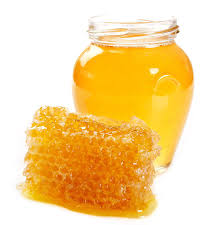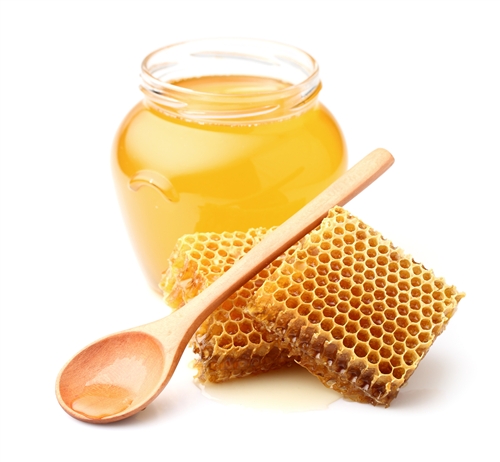Are there any raw honey dangers during pregnancy? This seems to be the question asked by expectant mothers who love honey. In this article, I explore the issue in great detail. I seek to answer issues such as: Can I have/eat raw honey during pregnancy unpasteurized? Is raw honey bad for pregnancy? Enjoy the read on raw honey dangers!
Jump to
Is Raw Honey Dangerous?
The most asked question is: Is it bad to eat/have honey when pregnant? Is it bad for a pregnant mother? The truth is raw honey may be dangerous. For example one of the raw honey dangers is the allergic reactions it causes in some people.
This is because is basically made by bees from nectar, directly obtained from the flowers of various plants, some of which are not friendly to humans. Many of the plants, especially those from cultivated fields, contain chemicals.
- These chemicals exist because the plants treated for various reasons, from time to time. Overuse of pesticides in neighboring farms and industrialization makes bee food sources compromised and scarce.
- Secondly, raw honey goes through little or no processing. This is likely to cause food poisoning among some people because it contains bee wing fragments, bee pollen, flecks and particles. These harmful substances may not be noticed when performing minimal cleaning.
- Thirdly, most unprocessed honey has no clear labels. It is therefore not easy to follow up on the integrity of the farm, individuals, or companies selling it.
- Fourthly, bees sometimes make honey from plants that are toxic to humans, for example, azalea and mountain laurels. You therefore need to consult widely before taking regular raw honey diets.
- Fifth, many modern bee farmers do not live in rural areas where bees have a variety of plants or flower to pick nectar from. Some of the farmers are forced to rely on organic sugar, which is very expensive, to feed their bees. Because many farmers cannot afford this kind of sugar, the will resort to corn syrup that are high in fructose or conventional table sugar.
Raw Honey vs. Processed Honey
Raw Honey is the natural honey has harvested from the beehive directly. It does not go through heating or any chemical process. It is therefore considered the purest honey form in the market.
Processed honey is excessively filtered and some of it goes through different chemical and non chemical process.

After going through the various steps processed honey ultimately becomes golden clear that most people see in shops.
It has been argued that honey loses some of its valuable nutrients while going through the high temperatures or other processes involved.
Unlike raw honey the processed honey goes through high-tech processes where, besides the hearing, it is forced through filters that remove its basic prove- the pollen.
This technology is said to have originated from china where cases of highly processed honey were first witnessed.
Currently, many countries, including the US and European Union are considering a ban on Chinese honey.
This is because they also concur that over-processed honey loses its original value.
Unfortunately, in an effort to reap maximum profits and compete with the Chinese, some US and Uk companies have also adopted the technology and selling honey not different from the criticized type.
A study conducted by Professor Vaughn Bryant of A&M university in Texas concluded that 76% of the processed honey did not have pollen (the pollen had been removed) and lacked many of the properties or benefits of raw honey.
Properties of both Raw and Processed Honey
The following is a list of some of the properties or benefits of both raw and processed honey. Surprisingly, of all the twenty three properties investigated, processed honey featured positively in only four cases.
Raw honey properties and benefits include:
- Antiviral, Anti-fungal, and anti-bacterial properties
- Anti-carcinogen properties
- Suppressed cough
- Reduces or Prevents ulcers
- Promotes digestion
- Stabilizes blood pressure
- Contains royal jelly
- Contains anti-inflammatory substances
- Boosts immunity
- Prevents free radicals
- Stabilizes blood sugar
- Decreases LDL cholesterol
- Replicates comb structure when placed in water
- Has a superior aroma
- Contains less corn syrup
- Heals wounds
Processed honey on the other hand has very few abilities and properties. It performs less than 20% of what raw honey can. The only positive properties and benefits noted in processed honey include;
- Its ability to suppress coughs contains antibiotics and fructose, which is essential for energy production.
- Processed honey was found to contain high syrups content and increases LDL cholesterol.
Mark Jensen, the President of the American Honey Producers was quoted as saying “it makes no sense” why the honey processors have chosen to remove all the pollen from raw honey because it goes contrary to their marketing objective of selling the highest product quality possible to0 consumers.
Raw Honey Dangers for Adults
Chris Wagner, a nurse at Dallas Medical Center, admitted in a WFAA Dallas TV interview that he has witnessed some cases of anaphylactic shock after eating raw honey containing allergens.
Some of the less severe allergic reactions of raw honey include rashes, itching, and having a puffy skin. Anaphylactic shock is an allergic reaction that has serious symptoms such as fainting, dizziness, difficulty in breathing, heart failure, low blood pressure and even sometimes death.
Wagner does not recommend taking of raw honey, especially for people with allergic conditions.
Raw honey can also cause a pricking sensation or vomiting among adults. This is particularly common among people who take honey made from the flowers of plants called the Ericaceous family. Rhododendron, a common garden plant, is an example of this plant family.
According to an article titled “Poisoning by Mad Honey” published by Food and Chemical Toxicology Journal in 1997, their nectar contains grayanotoxin, which hinders the functioning of your nervous system.
Victims are also likely to experience heart functioning problems as a side effect of taking raw honey partly made from the flowers of this plant family. These poisonous substances can be killed during honey processing, a procedure which raw honey takers may not benefit from.
Dangers of Eating Raw Honey in Pregnancy
There are no known raw honey dangers during pregnancy for expectant mothers who like eating it. This is because botulism spores that have serious effects on children below one year cannot survive in excessively acidic adult stomach. This condition therefore prevents spores from developing into botulism bacteria.
In addition, botulism bacteria cannot reach the mothers blood stream and as a result will not be a risk to the unborn baby. The risk of women eating honey is not practical; it is simply a widespread fear among people who do not have a clear understanding of human digestive system.
READ MORE: Is it safe to eat raw honey diet when pregnant?
Nevertheless, mothers are advised to avoid taking raw honey during pregnancy despite its much publicized health benefits because it may cause disease causing organisms.
Raw Honey Botulism
Another one of the raw honey dangers is botulism. Botulism is a condition caused by Clostridium botulinum, a poisonous nerve toxin caused by harmful bacteria believed to be present in raw honey.
It is a severe illness that can cause muscle weakness, paralysis or difficulty in breathing.
- Its inactive form is called spores and apart from honey can also be found in duct or soils. They turn active upon entering the human body and produce the botulism nerve toxins.
- The disease mainly occurs in infants under twelve months, especially those that have swallowed corn syrup, raw honey or soils that are contaminated with spores. However, it should be noted that the disease itself is not common
- This type of bacteria is not dangerous adults because they have a mature digestive track that can the potential of removing the spores before causing any damage.
- The spores swallowed by infants, however, easily multiply in their digestive track causing severe pain and illness.
- Two separate studies carried in San Francisco in 2002 showed that 2% of infants with the disease die and those who survive spent many days –an average of 45 days- in hospital under close supervision–an average of 45 days, before they recover.
READ MORE: How to use raw honey mask for face at home

